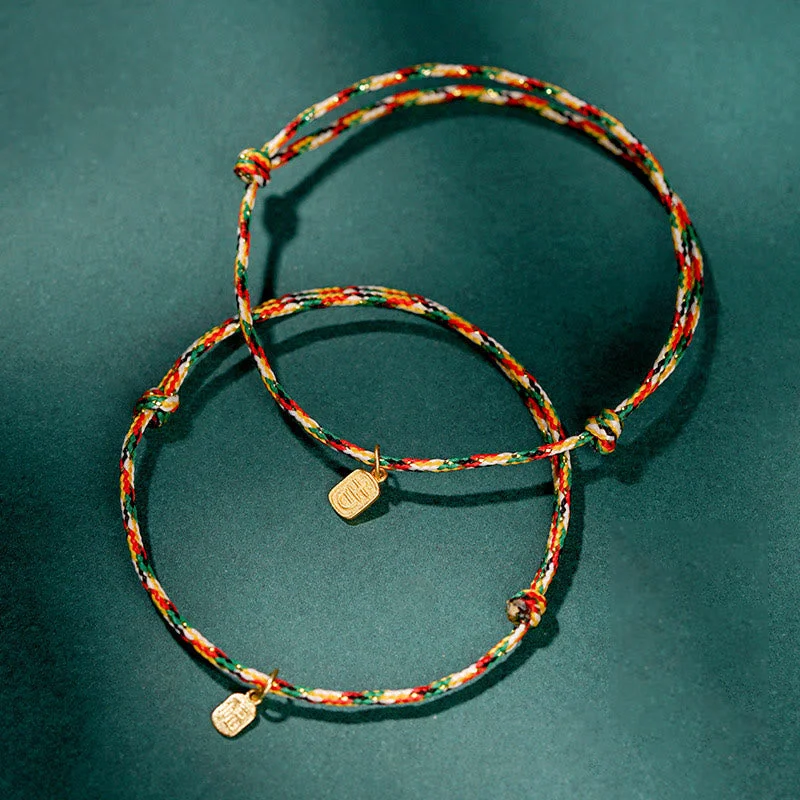Product Description
- "平安" means no accidents, no danger; stable, peaceful, and safe and well.
- "喜乐" means joy and happiness.
- Peace (平安) and Joy (喜乐) means that there will be no accidents in this life, and you will live peacefully and happily. Peace and joy can be used as a blessing to wish others.
Tie Colorful Ropes and Pray for Health:
The custom of tying colorful ropes has a long history. The five colors represent the five elements of gold, wood, water, fire, and earth, and contain the power of the five directions. There is also folklore that the multicolored silk is the incarnation of the dragon, and wearing the colorful rope to tie the dragon has a good meaning of good luck, peace and joy.
Color Symbolism in Tibetan Buddhism:
Blue: Purity and healing.
White: Learning and knowledge in Buddhism.
Red: Life force and preservation.
Green: Balance and harmony.
Yellow: Rootedness and renunciation.
Black: Repels evil spirits.
Fu Character
♥ Happiness ♥ Blessing ♥ Fortune ♥ Luck ♥
The Chinese character Fu (福) means happiness, blessing, good fortune, and good luck. People across China have the tradition to paste this character on their doors or windows during the Spring Festival to greet the Chinese Lunar New Year. They believe doing this will bring good fortune. It is written on diagonal square red paper and the character is usually pasted upside-down. Since the word for "arrive" in Chinese sounds the same as the word for "upside-down", pasting the character upside-down signifies that "good fortune has arrived". Pasting the character upside-down on a door or doorpost thus translates into a wish for prosperity to descend upon a dwelling. The Fu character can also be used in jewelry to represent the desire that one's good luck will be expansive.


